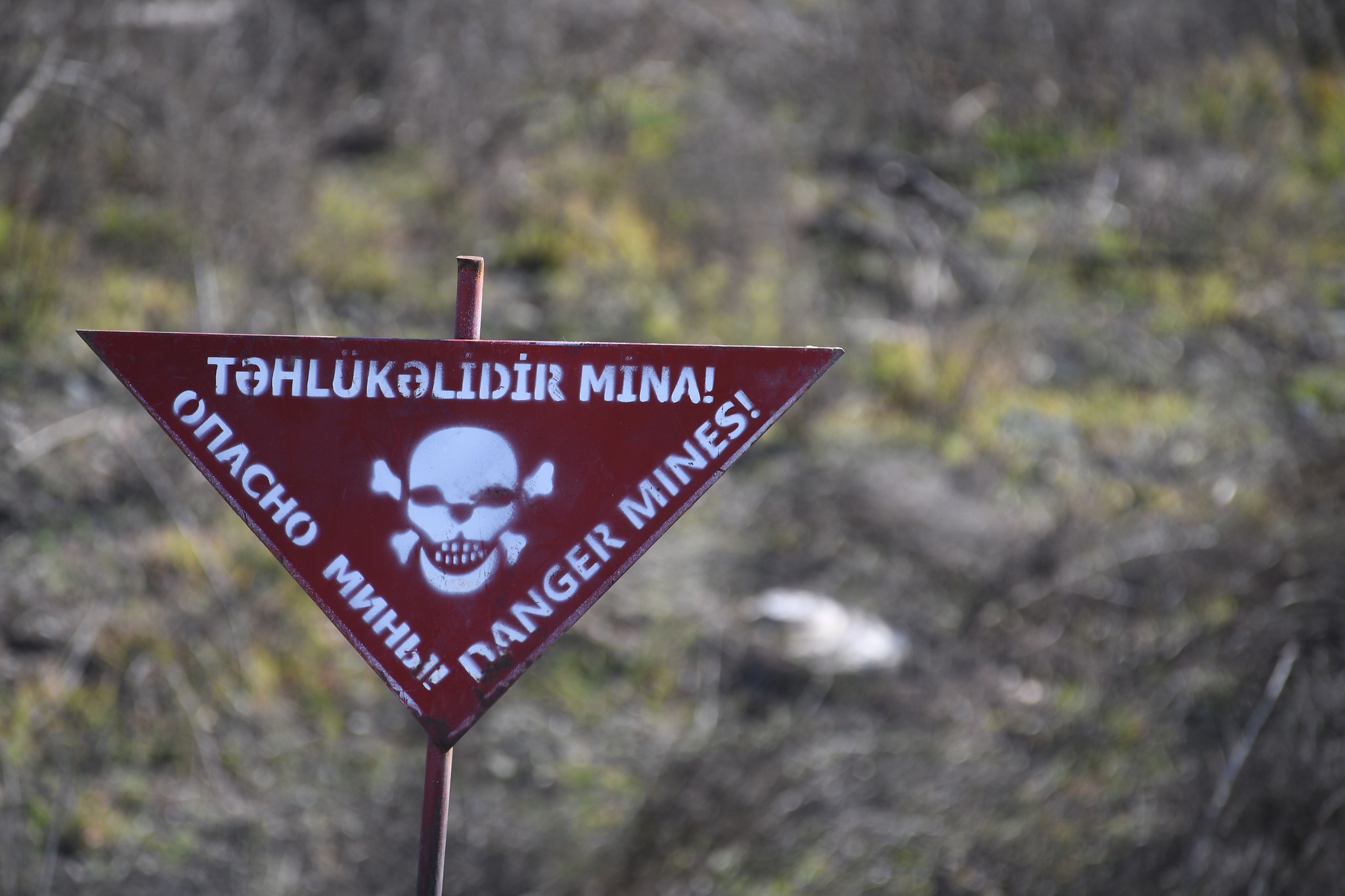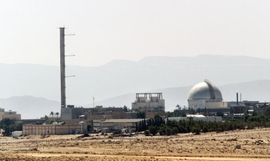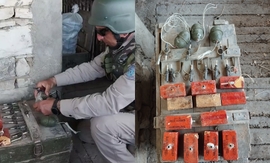The ongoing threats posed by Armenian landmine terror in Azerbaijan’s liberated territories have once again been highlighted by the Azerbaijan’s Foreign Ministry.
On the occasion of the International Day for Mine Awareness and Assistance in Mine Action, the Foreign Ministry released a statement on Tuesday, urging for accountability for those who create mine hazards while also obstructing efforts to resolve issues related to mine action.
“Today [April 4] marks the International Day for Mine Awareness. Mine action cannot wait, and entails holding those, including Armenia, who plant mines indiscriminately and refuse to cooperate in dismantling them, accountable. We must end the enormous human cost they create,” the ministry wrote on Twitter.
The foreign ministry’s statement followed another tragic landmine incident in which a 19-year-old Azerbaijani army conscript, Novruz Niftaliyev, was killed in a mine explosion in the Terter region on Sunday.
The Commissioner for Human Rights (Ombudsperson) of Azerbaijan, Sabina Aliyeva, also issued a plea to the international community on Tuesday, in recognition of the International Day of Mine Awareness and Assistance to Mine Action. Aliyeva revealed that, since the end of the 2020 Karabakh war, 289 Azerbaijanis have been affected by Armenian landmines, resulting in 51 deaths and 238 injuries. A total of 3,368 Azerbaijanis, including 357 children and 38 women, have been killed or injured as a result of mine explosions since 1991 to date.
“Despite repeated demands, Armenia still has not provided Azerbaijan with accurate maps of minefields. We think that the world community must unite in fighting against mine terrorism to protect the rights of people to life, welfare, and health,” reads the ombudsperson’s appeal.
“In this regard, Azerbaijan’s statements and appeals to international and regional human rights organizations, national human rights institutions of various countries, as well as the special report have presented the facts related to the mine problem and demanded urgent action within the mandates.”
Vugar Bayramov, a member of the Azerbaijani parliament, has stated that Armenia is still actively planting landmines in Azerbaijan's territory. Bayramov said that during the 30-year occupation of Azerbaijani lands, Armenia had planted almost one million landmines and is still smuggling them into the Karabakh region. He cited the recent discovery of Armenia-made landmines produced in 2021 in the Lachin region as evidence.
“Due to the prolonged occupation of a part of our territory, Azerbaijan is currently considered one of the most mine-contaminated countries in the world. It is believed that nearly 100,000 landmines were planted in the Fuzuli region alone during the occupation,” Bayramov wrote on Facebook on Tuesday.
Bayramov stated that over 15 percent of the territories in the Karabakh region have been cleared of mines since the end of 2020. In 2021, approximately $40 million was allocated from the state budget for mine action. Over 40,000 hectares (98,800 acres) of land are scheduled for demining in 2023. Furthermore, by 2026, more than 150,000 Azerbaijani citizens are expected to be resettled in areas cleared of mines in the Karabakh and East Zangazur regions.
The Karabakh (Garabagh) and East Zangazur regions of Azerbaijan have been heavily mined by Armenia’s forces since the 1990s. Following the Soviet Union’s dissolution in 1991, Armenia launched a full-blown military assault against Azerbaijan. The bloody war continued until a ceasefire was signed in 1994, resulting in Armenia’s occupation of 20 percent of Azerbaijan’s internationally recognized territories. During the war, over 30,000 Azerbaijanis were killed, and one million were forced to flee their homes in a brutal ethnic cleansing campaign conducted by Armenia.
On September 27, 2020, the decades-old conflict between the two countries reignited after Armenia’s forces deployed in occupied Azerbaijani lands shelled military positions and civilian settlements of Azerbaijan. During the counter-attack operations that lasted 44 days, Azerbaijani forces liberated over 300 settlements, including the cities of Jabrayil, Fuzuli, Zangilan, Gubadli, and Shusha, from the Armenian occupation. The war ended with the signing of a tripartite statement on November 10, 2020, by Armenia, Azerbaijan, and Russia, under which Armenia also returned the occupied Aghdam, Kalbajar, and Lachin districts to Azerbaijan.
Since the end of hostilities, the Azerbaijani government has been carrying out demining operations in the liberated territories to expedite the return of internally displaced Azerbaijanis to their homes. Despite extensive efforts, demining operations face many challenges due to Armenia’s refusal to hand over maps displaying the locations of the landmines.
The Azerbaijani National Agency for Mine Action reported that the maps provided by Armenia were just 2 percent effective in mine action. According to the Azerbaijani government data, international experts estimate it will take nearly 30 years and $25 billion to solve issues related to demining.







 The Mine Action Agency of Azerbaijan (ANAMA) reported on Thursday the discovery of a significant amount of explosives in the Khojavand district of ...
The Mine Action Agency of Azerbaijan (ANAMA) reported on Thursday the discovery of a significant amount of explosives in the Khojavand district of ...
 Iran has refuted reports of alleged damage to Shimon Peres Negev Nuclear Research Centre located southeast of Dimona, Israel, during the recent air...
Iran has refuted reports of alleged damage to Shimon Peres Negev Nuclear Research Centre located southeast of Dimona, Israel, during the recent air...
 Iran’s Foreign Minister, Hossein Amir-Abdollahian, has labeled a foiled Israeli drone attack in certain parts of the country as a "failure" for Isr...
Iran’s Foreign Minister, Hossein Amir-Abdollahian, has labeled a foiled Israeli drone attack in certain parts of the country as a "failure" for Isr...



